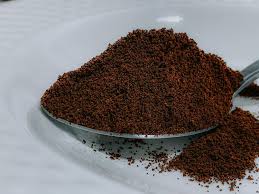As a coffee lover, you may be familiar with the rich, aromatic grounds that are left over after brewing a fresh pot. While it’s tempting to simply toss those grounds in the trash, did you know they can be quite beneficial for your plants and trees? That’s right – those humble coffee grounds can do wonders for the health and growth of your garden.
In this blog post, Is coffee grounds good for plants and trees? we’ll explore the many ways that coffee grounds can be used to nourish your plants, flowers, and trees. From improving soil quality to deterring pests, coffee grounds are a versatile and eco-friendly addition to any gardener’s toolkit.
The Nutritional Value of Coffee Grounds
At first glance, coffee grounds may not seem like the most obvious choice for plant food. After all, they’re the byproduct of a beverage, not a soil amendment. However, coffee grounds are packed with a variety of nutrients that can be incredibly beneficial for your plants.
The main nutrients found in coffee grounds include:
- Nitrogen – One of the three primary macronutrients needed for plant growth, nitrogen helps promote lush, green foliage.
- Phosphorus – This nutrient aids in root development and flowering.
- Potassium – Essential for overall plant health and vigor, potassium helps strengthen stems and improve drought resistance.
- Magnesium – A secondary macronutrient that supports chlorophyll production and enzyme function.
- Copper – A micronutrient that plays a role in photosynthesis and disease resistance.
In addition to these key nutrients, coffee grounds also contain small amounts of other minerals like iron, calcium, and zinc. While the nutrient profile can vary depending on the type of coffee and brewing method, the grounds generally provide a well-rounded boost of nourishment for your plants.
How to Use Coffee Grounds in the Garden
Now that we’ve covered the nutritional benefits, let’s dive into the different ways you can incorporate coffee grounds into your gardening routine. Here are some of the most effective and versatile applications:
1. Compost Additive
One of the easiest and most common ways to use coffee grounds in the garden is by adding them to your compost pile. The grounds are rich in nitrogen, similar to how spent coffee grounds balance out the carbon-heavy materials like dried leaves and wood chips. This creates a nutrient-dense compost that can then be worked into your soil to improve fertility and structure.
When adding coffee grounds to your compost, aim for a ratio of about 25-30% grounds to 70-75% other organic matter. Be sure to mix the grounds in thoroughly to prevent them from clumping together. You can also sprinkle the grounds directly onto your compost pile as you build it up.
2. Soil Amendment
If you don’t have a compost pile, you can still reap the benefits of coffee grounds by mixing them directly into your garden soil. The grounds will slowly release their nutrients over time, providing a steady supply of nourishment for your plants.
To use coffee grounds as a soil amendment, simply work a 1/2 to 1-inch layer of grounds into the top few inches of your soil. This can be done in the spring before planting, or throughout the growing season as needed. Just be sure not to use too much, as the acidity of the grounds can potentially harm sensitive plants.
3. Mulch
In addition to improving soil quality, coffee grounds can also be used as a natural mulch around your plants and trees. The grounds help retain moisture in the soil, suppress weed growth, and deter pests like slugs and snails.
To use coffee grounds as mulch, simply spread a 1-2 inch layer around the base of your plants, being careful not to let the grounds touch the stems or trunks. Reapply the mulch every few months as it decomposes.
4. Acid-Loving Plants
One of the unique properties of coffee grounds is their acidity. While this can be a concern for some plants, it makes coffee grounds an excellent choice for acid-loving plants like azaleas, hydrangeas, and blueberries.
To give these plants a boost, mix coffee grounds into the soil around their base or work them into the planting hole when transplanting. You can also create a “tea” by steeping the grounds in water and using the resulting liquid to water your acid-loving plants.
5. Pest Deterrent
In addition to their nutritional benefits, coffee grounds can also be used as a natural pest deterrent in the garden. The strong scent of coffee is known to repel animals like cats, rabbits, and deer, who may otherwise be tempted to nibble on your plants.
To use coffee grounds as a pest deterrent, simply sprinkle them around the base of your plants or trees. You can also create a barrier by placing a ring of ground around individual plants. Reapply after rain or watering to maintain the effectiveness.
The Environmental Benefits of Using Coffee Grounds
In addition to the practical benefits for your plants, using coffee grounds in the garden also has some important environmental advantages. By repurposing this common household waste, you can reduce the amount of organic material ending up in landfills and help create a more sustainable gardening practice.
Here are a few of the key environmental benefits of using coffee grounds in the garden:
Reduced Waste
According to the National Coffee Association, Americans drink an average of 3 cups of coffee per day. That adds up to a lot of used coffee grounds that would otherwise end up in the trash. By composting or directly applying those grounds to your garden, you’re keeping that organic material out of landfills and putting it to good use.
Improved Soil Health
As we’ve discussed, coffee grounds are rich in beneficial nutrients that can greatly improve the quality of your garden soil. By incorporating them into your soil, you’re helping to build healthier, more fertile ground that can support thriving plant life. This, in turn, supports a more robust and diverse ecosystem in your garden.
Reduced Chemical Inputs
Many commercial fertilizers and soil amendments contain harsh chemicals that can be harmful to the environment. Coffee grounds, on the other hand, are a natural, organic material that won’t pollute the soil or contaminate local waterways. Using them in your garden allows you to reduce your reliance on synthetic chemicals and embrace a more sustainable approach.
Carbon Sequestration
When coffee grounds are added to soil, the carbon they contain becomes “sequestered” or locked away, rather than being released into the atmosphere as greenhouse gas emissions. This process helps mitigate climate change by removing carbon dioxide from the air and storing it in the ground.
Potential Drawbacks and Considerations
While coffee grounds offer a wealth of benefits for your garden, it’s important to note that they shouldn’t be used indiscriminately. There are a few potential drawbacks and considerations to keep in mind when incorporating coffee grounds into your gardening routine.
Acidity
As we mentioned earlier, coffee grounds are acidic, with a pH typically ranging from 4.5 to 6.8. This can be beneficial for acid-loving plants, but it may cause issues for others who prefer more neutral soil. Before adding coffee grounds to your garden, it’s a good idea to test your soil’s pH and make adjustments as needed.
Nitrogen Imbalance
The high nitrogen content in coffee grounds can sometimes create an imbalance in the soil, leading to issues like stunted growth or yellowing leaves. To avoid this, be sure to mix the grounds thoroughly into the soil or compost, and avoid using them in excess.
Potential for Mold
If coffee grounds are left damp or in large clumps, they can become a breeding ground for mold and fungus. This can be detrimental to plant health, so it’s important to incorporate the grounds evenly and avoid letting them sit in soggy conditions.
Potential Toxicity
While coffee grounds are generally safe for most plants, they can be toxic to certain species, including some types of ferns, azaleas, and rhododendrons. It’s always a good idea to research the specific plants in your garden before applying coffee grounds around them.
Conclusion
As you can see, coffee grounds are a versatile and eco-friendly addition to any gardener’s toolkit. Whether you’re looking to improve soil quality, deter pests, or provide a nutrient boost for your plants, these humble grounds have a lot to offer.
By incorporating coffee grounds into your gardening routine, you can not only nourish your plants but also reduce waste and support a healthier, more sustainable environment. Just be mindful of the potential drawbacks and adjust your usage accordingly.
So next time you brew a fresh pot of coffee, don’t toss those grounds in the trash – save them for your garden! Your plants will thank you.
Frequently Asked Questions:
1. Can I use coffee grounds in my garden?
Yes, integrating fresh coffee grounds into your gardening routine can provide numerous benefits. coffee grounds can be beneficial when used in gardens. They act as a natural compost and can provide essential nutrients to plants.
2. Are coffee grounds good for plants as a fertilizer?
Coffee grounds contain nutrients such as nitrogen, potassium, and phosphorus, making them a suitable option as a fertilizer for plants. They can help promote plant growth.
3. How should I use coffee grounds for my plants?
You can use coffee grounds by adding them to your compost or directly sprinkling spent coffee grounds around your plants as natural mulch. Make sure not to use coffee grounds Use a moderate amount of coffee grounds in your garden, as excessive amounts may alter the soil pH.
4. Do all plants benefit from coffee grounds?
While many plants can benefit from coffee grounds, it is particularly advantageous for acid-loving plants such as azaleas, roses, and blueberries due to the slightly acidic nature of coffee grounds.
5. What are the pros of using coffee grounds in the garden?
Coffee grounds can help improve soil structure, provide plant nutrients, and act as a natural pest deterrent. They are also a sustainable way to reuse grounds that would otherwise be discarded.
6. Are there any cons of using coffee grounds for plants?
One potential drawback of using coffee grounds is that they can increase the soil’s acidity over time if used excessively.
7. Can coffee grounds be used around trees?
Yes, you can sprinkle coffee grounds around trees as well. They can help enrich the soil near the tree roots and provide some nutrients that benefit the overall health of the tree.


Leave a Reply